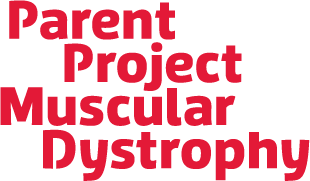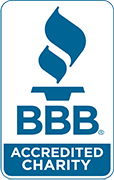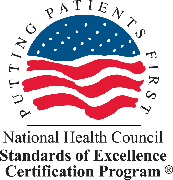Duchenne Drug Development Pipeline
The Drug Development Pipeline is full of potential treatments that are being tested. These include therapeutic approaches that restore or replace dystrophin and those that treat Duchenne symptoms (such as those that protect muscles by reducing fibrosis and inflammation). The goal? To test combinations of these therapies to create the best “cocktail” for each patient.
Click on any drug in the interactive pipeline below to learn more about therapies in development for Duchenne.

Restoring or Replacing Dystrophin
Learn MoreDystrophin restoration or replacement aims to treat the underlying cause of Duchenne which is the lack of dystrophin, the protein that provides stability to the muscles. Exon skipping and nonsense mutation readthroughs are both ways that dystrophin restoration is being explored. Strategies to replace the missing dystrophin protein include gene therapy, which uses a modified smaller version of the dystrophin gene, called micro-dystrophin, to produce a modified micro-dystrophin protein.
Learn More-
AMONDYS 45™
Exon Skipping
Sarepta Therapeutics
AMONDYS 45™, To Patients
-
ELEVIDYS
Gene Therapy: Replacement
Sarepta Therapeutics
ELEVIDYS, To Patients
-
EXONDYS 51®
Exon Skipping
Sarepta Therapeutics
EXONDYS 51®, To Patients
-
VILTEPSO™
Exon Skipping
NS Pharma
VILTEPSO™, To Patients
-
VYONDYS 53®
Exon Skipping
Sarepta Therapeutics
VYONDYS 53®, To Patients
-
Ataluren (Translarna®)
Nonsense Mutation Readthrough
PTC Therapeutics
Ataluren (Translarna®), Phase |||
-
NS-089/NCNP-02
Exon Skipping
NS Pharma
NS-089/NCNP-02, Phase ||
-
PGN-EDO51
Exon Skipping
PepGen
PGN-EDO51, Phase ||
-
rAAVrh74.MCK.GALGT2
Gene Therapy: Surrogate
Nationwide Children's Hospital
rAAVrh74.MCK.GALGT2, Phase |/||
-
scAAV9.U7.ACCA
Gene Therapy: Exon Skipping
Nationwide Children's Hospital
scAAV9.U7.ACCA, Phase |/||
-
WVE-N531
Exon Skipping
Wave Life Sciences
WVE-N531, Phase |/||
-
AOC 1044
Exon Skipping
Avidity Biosciences
AOC 1044, Phase |/||
-
BMN 351
Exon Skipping
Biomarin
BMN 351, Phase |/||
-
Dyne-251
Exon Skipping
Dyne Therapeutics
Dyne-251, Phase |/||
-
RGX-202
Gene Therapy: Replacement
REGENXBIO
RGX-202, Phase |/||
-
SGT-003
Gene Therapy: Replacement
Solid Biosciences
SGT-003, Phase |/||
-
NS-050/NCNP-03
Exon Skipping
NS Pharma
NS-050/NCNP-03, Phase |/||
-
ENTR-601-44
Exon Skipping
Entrada Therapeutics
ENTR-601-44, Pre-Clinical

Combating Fibrosis
Learn MoreFibrosis, defined as the thickening and scarring of connective tissue, is a downstream symptom of the lack of dystrophin. Fibrosis occurs in Duchenne when chronic inflammation inhibits muscle repair. Reducing fibrosis may help decrease the breakdown of mature muscle cells and increase muscle strength.
Learn More
Reducing Inflammation
Learn MoreInflammation is a critical characteristic of Duchenne disease progression. Due to muscle degeneration and the resulting immune cells brought in to help regenerate the muscle, a whole host of inflammatory substances are released. The muscles of individuals with Duchenne are constantly in a state of inflammation. Corticosteroids are currently the standard of care to treat inflammation but have a number of side effects associated with long-term use. There are a number of experimental therapies in development that are aimed at reducing inflammation.
Learn More-
AGAMREE®
Corticosteroid
Catalyst Pharmaceuticals
AGAMREE®, To Patients
-
EMFLAZA®
Corticosteroid
PTC Therapeutics
EMFLAZA®, To Patients
-
ATL1102
Antisense Oligonucleotide
Percheron Therapeutics
ATL1102, Phase ||
-
Canakinumab (ILARIS®)
Monoclonal Antibody
Children's Research Institute
Canakinumab (ILARIS®), Phase |/||

Regulating Calcium Balance
Learn MoreIn Duchenne, because of the instability of the muscle membrane due to the lack of dystrophin, leaks in the muscle cell membrane can develop. These leaks can let too much calcium flow in and out of the muscle cell, disrupting cellular functions which further exacerbate cellular repair. Companies are developing compounds that aim to help regulate the calcium flow.
Learn More
Improving Muscle Growth & Protection
Learn MoreSeveral therapeutic options intend to encourage muscle growth and discourage muscle breakdown. There are many strategies that can be explored in this domain, including approaches to enhance repair capabilities of the muscle, protect the muscle from breakdown, reduce inflammation and fibrosis, or induce muscle development.
Learn More-
DUVYZAT™ (givinostat)
Small Molecule Inhibitor
ITF Therapeutics
DUVYZAT™ (givinostat), To Patients
-
CAP-1002
Cell Therapy
Capricor Therapeutics
CAP-1002, Phase |||
-
EDG-5506
Small Molecule Inhibitor
Edgewise Therapeutics
EDG-5506, Phase ||
-
SAT 3247
Small Molecule Inhibitor
Satellos
SAT 3247, Phase |
-
MyoPAXon
Cell Therapy
Myogenica
MyoPAXon, Pre-Clinical

Improving Heart Function
Learn MoreCardiac function is a concern in Duchenne, as the heart is a muscle and is affected by the lack of dystrophin. There are a number of therapies in development that may impact both the skeletal muscle and cardiac muscle. However, some strategies are aimed primarily at the heart. Use of known cardiac interventions – Angiotensin-converting-enzyme (ACE) inhibitors, Angiotensin receptor blockers (ARBs), Eplerenone, or Betablockers – are part of care management of the heart based on physician recommendation.
Learn More








